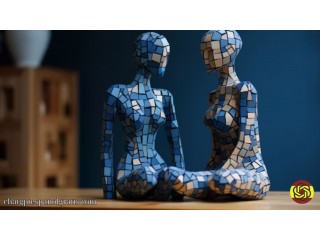UNDERSTANDING AUDIO AND VIDEO WIRE AND CABLE Private
3 years ago - Automobiles - Barddhamān - 170 viewsAn Electrical conductor is an element (remember the periodic table in chemistry?) which conducts electricity, as opposed to an insulator, which does not, or a semiconductor which allows some electricity to pass. There are also alloys that have different electrical characteristics, and platings or other element to element contacts such as in connectors which also have electrical characteristics as well as chemical characteristics in their applications. Simply stated - it is not just a matter of connect metal to metal and you have a good connection. The best connectivity designs take into account the source connector materials, the receiving device connector materials, the audio video wire connector materials, the conductor materials and the electrical and chemical ways in which they interact with one another.
MEET THE CONDUCTORS - SILVER, COPPER, GOLD, TIN, NICKEL, STEEL
1. Silver is the best conductor, with a very slight edge over copper. Silver also has the benefit of having oxidation that conducts as well as unoxidized silver.
2. Copper is the next best conductor, with about 1.05 times the resistance of silver, and due to its lower cost is the most commonly used conductor for audio and video cables. Unfortunately copper oxidation is a semi conductor and should be avoided because of the "skin effect" which causes high frequencies to use the outside of the conductor at high frequencies. If the outside of the conductor is oxidized, the performance at very high frequencies will suffer. Note: This is does not have any significant effect in the audio frequency range. (For more on Skin effect see the Article Library at Audioholics)
Discreet wiring - Discreet wiring is where separate conductors, indluding speaker wires, are run in some fashion (wires or circuit board traces) to the circuit components or input/output connections to which they need to go to. In some circuits, especially non signal related connections the path or interaction of these types of wires to one another is not particularly important as long as they are separated from one another to a reasonable extent. The closer they get, the more likely they are to possibly interact. This all goes out the window when a signal or "change" (whether they are due to ac power wire, analog signals or digital signals - basically any type of current or voltage change) becomes a part of the mix.
Example: Two wires are close together while another two wires are farther apart. The closer wires act more like a capacitor (have more capacitance) than the second two wires. If the circuit is in a quiescent state - "at rest" (no changes are going on) , there is potential energy storage due to capacitance, but without change, it has no effect on any signal, since there is no change. If you then create a change, or signal wire that causes electrical current flow, the two sets of wires may then have an effect on those changes, due to capacitance, inductance, etc, and the changes created may be different depending on the frequency of the signal involved and the characteristics of the wires and the overall circuit.
*Note - Steel Coat Hangers as Cable
While the typical crazies on forums suggest that coat hangers will operate just fine as an audio cable (and poorly designed tests concur) there are definitive reasons why it is not a remotely good choice. First of all, Steel is a very poor conductor with over 7 times the resistance of copper wire. That means lots of wasted power supply wire. Second, steel oxidizes easily and the oxidization is a poor conductor. Third, steel is rather hard to make into a twisted pair, allowing for EMI and RFI resistance. Without making the steel into a twisted pair, Noise and Hum may become a larger than desired portion of the sound!














